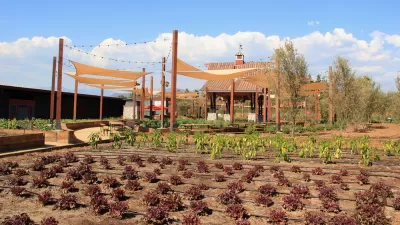A few eco-conscious -- and business savvy -- suburbanites are ripping up their lawns and growing vegetables to cater to the increasing demand for local produce.
"When suburbanites look out their front doors, a lot of them want to see a lush green lawn. Kipp Nash wants to see vegetables, and not all of his neighbors are thrilled.
"I'd rather see green grass" than brown dirt patches, says 82-year-old Florence Tatum, who lives in Mr. Nash's Boulder neighborhood, across the street from a house with a freshly dug manure patch out front. "But those days are slipping away."
Since 2006, Mr. Nash, 31, has uprooted his backyard and the front or back yards of eight of his Boulder neighbors, turning them into minifarms growing tomatoes, bok choy, garlic and beets. Between May and September, he gives weekly bagfuls of fresh-picked vegetables and herbs to people here who have bought "shares" of his farming operation. Neighbors who lend their yards to the effort are paid in free produce and yard work.
A school-bus driver, Mr. Nash rises at 5 a.m. and, after returning from his morning route, spends his days planting, watering and tending his yard farms and the seedlings he stores in a greenhouse behind his house.
Farmers don't necessarily live in the country anymore. They might just be your next-door neighbor, hoping to turn a dollar satisfying the blooming demand for organic, locally grown foods."
FULL STORY: Green Acres II: When Neighbors Become Farmers

Planetizen Federal Action Tracker
A weekly monitor of how Trump’s orders and actions are impacting planners and planning in America.

Chicago’s Ghost Rails
Just beneath the surface of the modern city lie the remnants of its expansive early 20th-century streetcar system.

San Antonio and Austin are Fusing Into one Massive Megaregion
The region spanning the two central Texas cities is growing fast, posing challenges for local infrastructure and water supplies.

Since Zion's Shuttles Went Electric “The Smog is Gone”
Visitors to Zion National Park can enjoy the canyon via the nation’s first fully electric park shuttle system.

Trump Distributing DOT Safety Funds at 1/10 Rate of Biden
Funds for Safe Streets and other transportation safety and equity programs are being held up by administrative reviews and conflicts with the Trump administration’s priorities.

German Cities Subsidize Taxis for Women Amid Wave of Violence
Free or low-cost taxi rides can help women navigate cities more safely, but critics say the programs don't address the root causes of violence against women.
Urban Design for Planners 1: Software Tools
This six-course series explores essential urban design concepts using open source software and equips planners with the tools they need to participate fully in the urban design process.
Planning for Universal Design
Learn the tools for implementing Universal Design in planning regulations.
planning NEXT
Appalachian Highlands Housing Partners
Mpact (founded as Rail~Volution)
City of Camden Redevelopment Agency
City of Astoria
City of Portland
City of Laramie





























